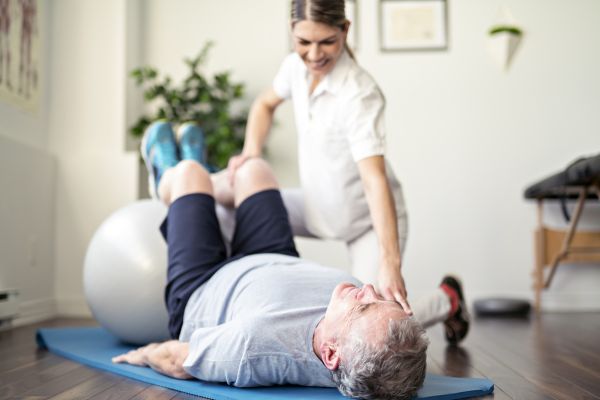
While you can experience a fall injury at any age, risks and severity increase as you grow older. Especially for adults 65 and over, falls may negatively impact quality of life, resulting in reduced mobility, less socialization, cognitive health decline and higher risks for a subsequent fall injury.
Physical therapy serves three key roles: injury recovery, strengthening the body against further injury risks and increasing a patient’s overall quality of life. Whether for yourself or a loved one, learn about the purpose and benefits of physical therapy after a fall.
What to Expect During Physical Therapy
Your primary care provider may recommend physical therapy if you have a fear of falling, your balance has changed with age or you just experienced a fall injury. These sessions focus on improving your balance, leg and core strength and preserving your mobility. This approach helps individuals aged 65 and older to reduce fall risks, maintain their mobility and manage pain.
Initially, a physical therapist will review your medical history and medication usage, observe your heart rate and blood pressure, cognitive health, balance, strength and vision. Expect to have your footwear and home environment evaluated to help formulate a personalized recovery and fall prevention plan, primarily focusing on balance, mobility and patient education.
Generally, these aspects involve:
- Exercises to improve your balance and help you recover in the event of a fall.
- Discussing mobility, home adaptations needed and the benefits of walking.
- Improving your coordination, especially as you walk or stand.
- Strengthening your legs and core to improve balance.
- Exercises that manage and minimize pain, decrease fall risks and lessen medication use.
- Talking about other factors increasing your fall risks and ways you can remain social and active, while staying safe.
Benefits of Physical Therapy After a Fall Injury
For patients recovering from a fall injury, physical therapy offers the following benefits:
- Pain Management: Depending on the severity of your injury, you may be experiencing pain and swelling, which further restrict mobility and may be impacting recovery. Your therapist works to keep your joints flexible and manage tight, constricted muscles by prescribing a series of exercises to perform slowly.
- Maintaining Quality of Life: After a fall, quality of life can decline sharply. Older adults may find their mobility compromised and require assistance with standing up, climbing stairs or getting dressed. Physical therapy focuses on adaptive strategies to help you remain independent and hasten your recovery.
- Improving Mobility: You’ll start with light to moderate exercises that keep your joints and related muscle groups moving and limber. This strategy maintains, if not increases, your range of motion and helps lower your risks for another injury.
- Fall Prevention: Older adults who get injured from a fall often experience a similar injury in less than a year’s time. Physical therapy helps strengthen your muscles to increase balance and stability during recovery and improve your coordination to lower future fall risks.
- Improving Confidence: Following a fall injury, many older adults stop leaving their home, socialize less and have higher risks for depression, all factors that contribute to cognitive decline. Physical therapy ultimately improves confidence following these incidents, so they can maintain relationships with loved ones or continue holding a job.
As you recover from a fall injury, contact the physical therapists at Integrated Rehab to get back on your feet and strengthen your body against future incidents.

